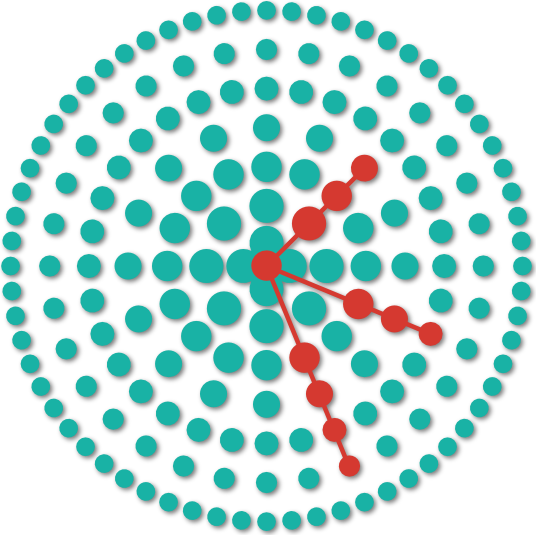Glioblastoma Recurrence


Glioblastoma is a highly aggressive and malignant tumor arising from glial cells. This tumor is the most common and deadliest form of brain cancer, accounting for 47% of all diagnoses. The condition is treatable through surgery, radiation therapy and chemotherapy but still poses significant challenges due to its aggressive nature and tendency to recur.
Glioblastoma is known for its poor survival rates, and recurrence further compounds the challenges patients and healthcare providers face. Often, the condition resurfaces within a year of initial treatment, leading to a reduced quality of life for affected individuals.
Below, we delve deeper into the complexities of glioblastoma by exploring the factors contributing to recurrence and the various treatment strategies employed to combat this disease. By understanding the condition, patients can receive greater hope against this devastating cancer.
What Contributes to Glioblastoma Recurrence?
Glioblastoma recurrence is a complex phenomenon influenced by various elements intrinsic to tumor biology and its interaction with the surrounding brain tissue. The following are the key factors that play a role in the condition's re-emergence:
Tumor Heterogeneity
Glioblastomas are highly diverse tumors, both genetically and at the cellular level. Within a single glioblastoma, various tumor cells can have different genetic mutations, behavior patterns and characteristics. This heterogeneity makes some tumors adaptable and resistant to treatment, enabling them to survive and lead to recurrence. Further, different cell subgroups within the mass add complexity to treatment strategies, as each subgroup responds differently to therapies.
Why should you have your surgery with Dr. Cohen?
Dr. Cohen
- 7,500+ specialized surgeries performed by your chosen surgeon
- More personalized care
- Extensive experience = higher success rate and quicker recovery times
Major Health Centers
- No control over choosing the surgeon caring for you
- One-size-fits-all care
- Less specialization
For more reasons, please click here.
Infiltrative Nature of Glioblastoma Cells
Glioblastoma cells have a unique ability to infiltrate surrounding brain tissues. They extend finger-like projections known as "pseudopods" into nearby regions, making it challenging to remove all tumor cells during surgery. Even with advances in imaging techniques and surgical technologies, microscopic glioblastoma cells can evade resection and remain in the brain.
Resistance to Treatment Modalities
Glioblastoma cells can resist standard treatment modalities, including radiation therapy and chemotherapy, which can be intrinsic or acquired over time.
Intrinsic resistance refers to pre-existing characteristics of the tumor cells that make them less susceptible to treatment. Acquired resistance, on the other hand, occurs when tumor cells adapt and develop mechanisms to survive and proliferate despite therapy.
Recurrent Glioblastoma Detection Techniques
Detecting recurrent glioblastoma as early as possible is crucial to start treatment immediately. As mentioned above, glioblastoma is an aggressive cancer. If the recurrence is left undetected or detected later, the tumor can progress further, causing neurological symptoms and compromising the patient's survival rates.
Advanced imaging techniques are employed to detect recurrent glioblastoma at the earliest opportunity, with the most common being:
MRI (Magnetic Resonance Imaging)
MRI is a widely used imaging modality for monitoring glioblastoma recurrence as it provides high-resolution images that allow healthcare professionals to visualize the brain structure. Through MRI, doctors can identify any areas that may indicate tumor recurrence. Various sequences, such as contrast-enhanced, diffusion-weighted and perfusion imaging, provide additional information about tumor characteristics and vascularity.
PET (Positron Emission Tomography)
PET imaging is a technique that involves the injection of a small amount of a radioactive tracer that emits positrons. The tracer then accumulates in areas with increased metabolic activity, such as tumor cells, making it effective in detecting recurrent glioblastoma. PET scans can be combined with MRI scans to provide more precise anatomical localization of metabolic abnormalities.
CT (Computed Tomography)
CT scans use X-rays to create detailed cross-sectional images of the brain. While this imaging technique may not provide as much anatomical detail as MRI, it is often used to assess the brain for recurrent glioblastoma, especially in emergencies or when MRI is contraindicated. CT scans are also helpful for evaluating the presence of any associated complications, such as hydrocephalus or hemorrhage.
Regular imaging surveillance and follow-up scans are essential to monitoring for recurrent tumors and enable early detection. The selection of the most appropriate imaging technique depends on each patient's specific needs and is determined by healthcare professionals experienced in managing brain cancer.
Glioblastoma Recurrence Treatment Strategies
Glioblastoma recurrence poses significant challenges in treatment stages, but several strategies have been developed to address this formidable disease. Medical experts consider various options tailored to the patient's condition when faced with recurrent tumors.
Here are some commonly employed glioblastoma recurrence treatment strategies:
- Salvage surgery: In cases where recurrent glioblastoma is localized, surgery or debulking procedures is the first treatment option considered. Surgical intervention removes as much of the recurrent tumor as possible, potentially alleviating symptoms and improving the effectiveness of subsequent treatments.
- Targeted therapies: This treatment focuses on specific genetic alterations or molecular pathways in glioblastoma cells. Through profiling, healthcare professionals can identify specific mutations or biomarkers that can be targeted with tailored therapies.
- Immunotherapy: This modality utilizes the body's immune system to recognize and destroy cancer cells. Immune checkpoint inhibitors, such as pembrolizumab and nivolumab, have shown promise in treating recurrent glioblastoma. These drugs target cancer cells by blocking the "checkpoints" that prevent immune cells from attacking the tumor.
- Novel treatment modalities: Research efforts continue to explore novel treatment modalities and experimental therapies for brain cancer. This includes gene therapies, oncolytic viruses, targeted nanoparticles and other innovative approaches.
- Palliative care: Glioblastoma recurrence can lead to a decline in the patient's overall condition and quality of life. Therefore, palliative care focuses on relieving symptoms, managing pain and addressing the patient's emotional and psychological needs.
Get Expert Opinion on Glioblastoma Recurrence
Glioblastoma recurrence remains a formidable challenge in the field of oncology. This brain tumor's aggressive nature and ability to evade treatment highlights the importance of early detection and proactive management.
As patients navigate the challenges of recurrent glioblastoma, it’s crucial to seek the support of healthcare professionals specializing in this field. Additionally, obtaining a second opinion on diagnosis and treatment options provides valuable insights and potentially opens new avenues for personalized care.
If you or a loved one are facing a diagnosis, seek the advice of a qualified specialist to explore all available options and make informed treatment decisions. Contact us today for a comprehensive evaluation.











